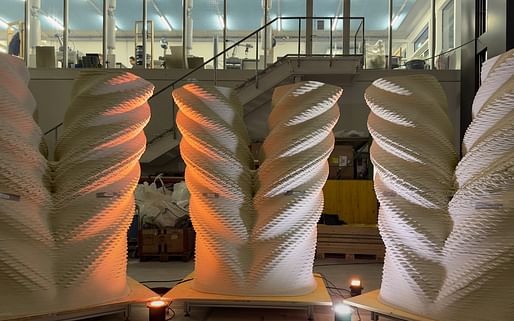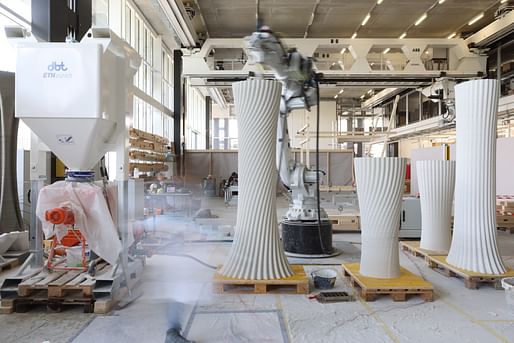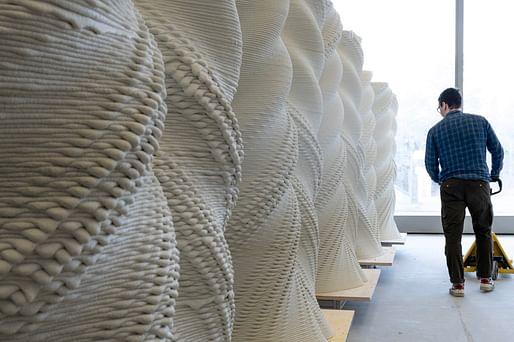
Production has begun on a 3D printed tower in Switzerland, which is expected to be the tallest structure of its kind in the world. Named the ‘Tor Alva’ or ‘White Tower,’ the project is currently being fabricated at ETH Zurich, where the first eight columns of the tower’s lower floor commenced 3D printing in February.

The columns’ fabrication sees a robot extrude the concrete in 8mm-high layered print paths. In a departure from traditional concrete construction, the 3D printing process means formwork is no longer required, freeing new avenues for the team to experiment with shapes, surface details, and cavities. The tower will also be the first instance of printed concrete being used in a fully structural manner, with steel reinforcement inserted during the robotic production process.

The tower will be constructed in the remote Swiss Alps village of Mulegns, where it will host music and theater performances. At 98 feet (nearly 30 meters) tall, the project will be the tallest 3D printed structure in the world, consisting of 32 branched Y-shaped columns. Each of them will contain unique ornamentation consisting of large undulating ribs and smaller material-driven textures.

The tower will contain six floors, described by the team as “abstract, atmospherically dense spaces” that “range from dark and enclosed rooms at the bottom to light and airy ones on top.” The tower’s circulation is centered on a spiral staircase weaving through a series of collonades to culminate at a rooftop panoramic performance space.

“With its spectacular architecture and ground-breaking technology, the tower demonstrates the possibilities that computational design and digital fabrication offer the fields of architecture and construction,” the team says about the tower. “These include not only economic and ecological advantages, but they allow for an elaborate, non-standard architecture with a bold wealth of shapes.”
The project is expected to open in the summer of 2024. Design of the scheme was led by architects Benjamin Dillenburger and Michael Hansmeyer of ETH Zurich’s Digital Building Technologies group, delivered in collaboration with the Institute of Structural Analysis and Design (CSBD) and the Institute of Building Materials (PCBM).

News of Tor Alva comes in the same month that researchers from Chalmers University of Technology in Sweden used cellulose and algae to create a 3D printed architectural material, and weeks after MIT researchers developed a rapid 3D printed process with liquid metal. Earlier in January, Holcim and Zaha Hadid Architects debuted their second 3D printed bridge concept while, in December, Louisiana State University and NASA announced a collaboration to develop waterless concrete for 3D printing on the Moon.

ETH Zurich’s own recent research in material science has included a 3D printed insulation foam using recycled materials, a timber dome constructed entirely from waste materials, and a prototype 3D printed eggshell pavilion.
No Comments
Block this user
Are you sure you want to block this user and hide all related comments throughout the site?
Archinect
This is your first comment on Archinect. Your comment will be visible once approved.